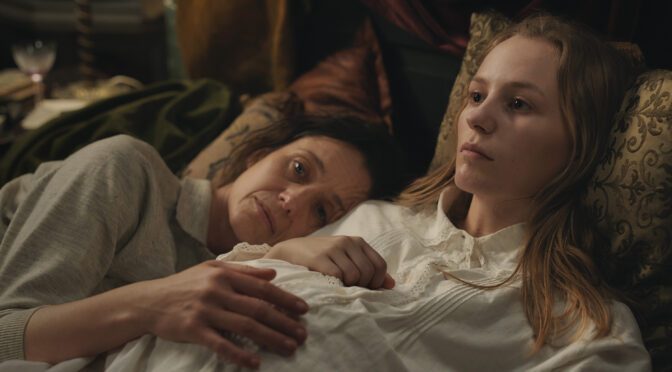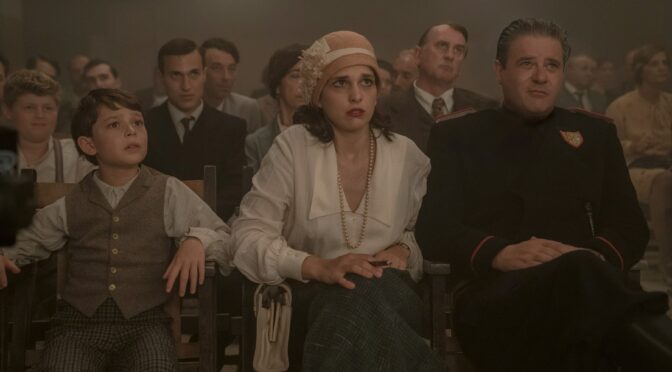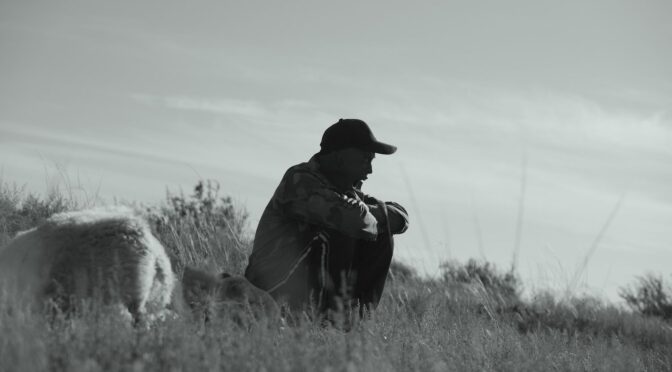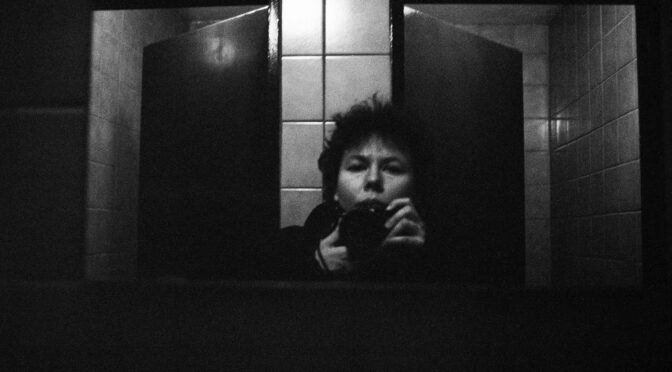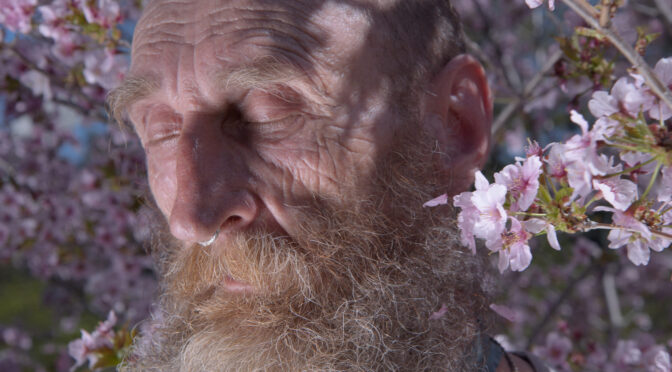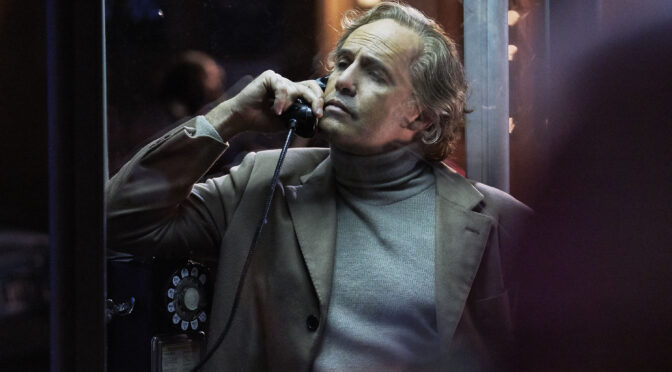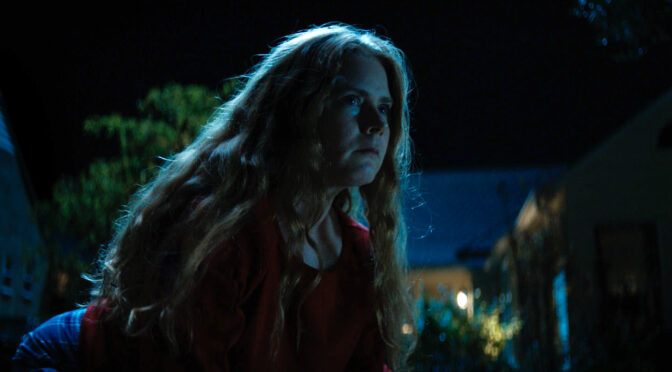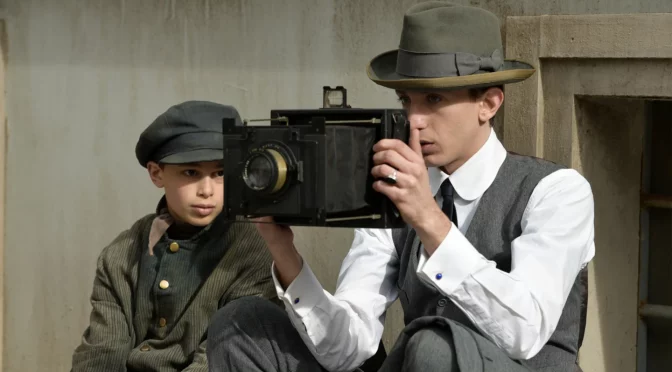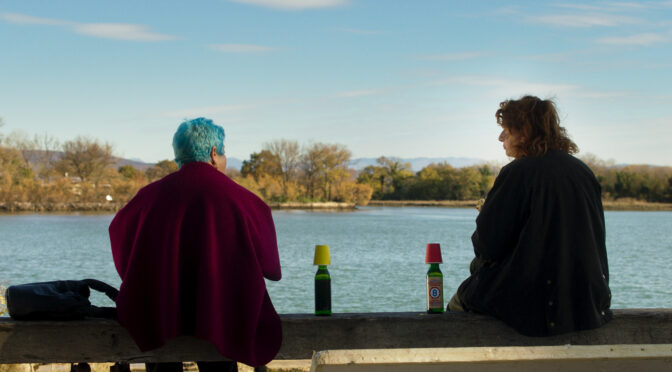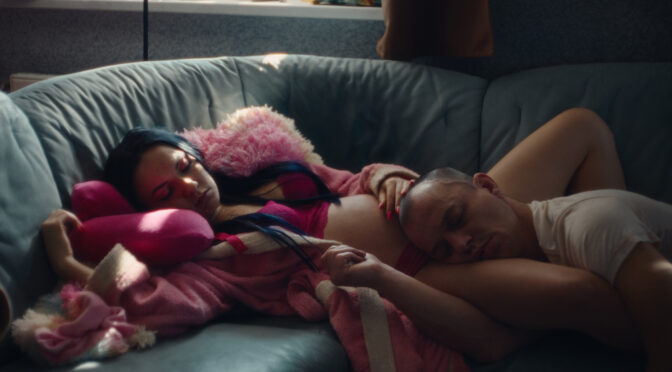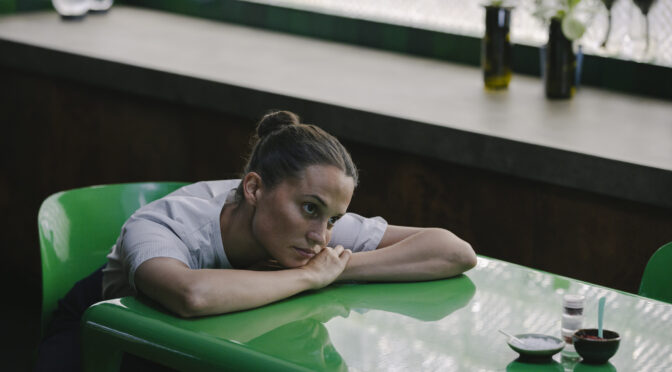Che cosa si può arrivare a sacrificare per ottenere qualche briciola d’amore dopo una vita di fame? Forse persino la propria libertà. Madame Ida indaga le conseguenze della mancanza d’amore attraverso un racconto dal respiro tragico, denso di simbolismi.
Continua la lettura di “MADAME IDA” DI JACOB MØLLERArchivi tag: in evidenza
“HO VISTO UN RE”, BY GIORGIA FARINA
Article by Silvia De Gattis
Translation by Giuditta Portaro
The life of little Emilio (Marco Fiore) moves between two different dimensions: on one hand, the concrete everyday life of a child in Fascist Italy in 1936; on the other, the adventures experienced by his hero, Sandokan, in the books his uncle gives him. But what happens when these two dimensions intertwine?
Continua la lettura di “HO VISTO UN RE”, BY GIORGIA FARINA“HO VISTO UN RE” DI GIORGIA FARINA
La vita del piccolo Emilio (Marco Fiore) si muove tra due dimensioni differenti: da una parte, la concreta quotidianità di un bambino nell’Italia fascista del 1936; dall’altra, le avventure vissute dal suo eroe, Sandokan, tra i libri che gli regala suo zio. Ma cosa succede quando queste due dimensioni si intrecciano?
Continua la lettura di “HO VISTO UN RE” DI GIORGIA FARINA“THE SHEPHERD”, BY YUFEI ZHAO
Article by Orazio Oztas
Translation by Federica Lozito
“…(the nuns) taught us there are two ways through life: the way of Nature and the way of Grace. You have to choose which one you’ll follow.” This quote from Terrence Malick’s The Tree of Life could limpidly sum up the story of the shepherd Zhenping, the protagonist of the documentary The Shepherd, if the word “grace” were replaced with the word “love.”
Continua la lettura di “THE SHEPHERD”, BY YUFEI ZHAO“THE SHEPHERD” DI YUFEI ZHAO
“… ci hanno insegnato che esistono due vie per attraversare la vita, la via della Natura e la via della Grazia. Tu devi scegliere quale via seguire”. Questa citazione da The Tree of Life di Terrence Malick potrebbe riassumere limpidamente la storia del pastore Zhenping, protagonista del documentario The Shepherd, se al posto della parola “grazia” si sostituisse il termine “amore”.
Continua la lettura di “THE SHEPHERD” DI YUFEI ZHAO“I’M NOT EVERYTHING I WANT TO BE”, BY KLÁRA TASOVSKÁ
Article by Giorgia Andrea Bergamasco
Translation by Vittorio Cavalli
I’m Not Everything I Want to Be is a biographical documentary in the second level: through the overlap of an extensive photographic archive and meticulously written personal diaries, the film retraces, step by step, from 1986 to the present day, the unceasing search for identity by Czech photographer Libuše Jarcovjáková.
Continua la lettura di “I’M NOT EVERYTHING I WANT TO BE”, BY KLÁRA TASOVSKÁ“I’M NOT EVERYTHING I WANT TO BE” DI KLÁRA TASOVSKÁ
I’m Not Everything I Want to Be è un documentario biografico al quadrato: nella sovrapposizione di uno sconfinato repertorio fotografico e di diari personali minuziosamente redatti, il film ripercorre, tappa dopo tappa, dal 1986 a oggi, l’incessante ricerca identitaria della fotografa ceca Libuše Jarcovjáková.
Continua la lettura di “I’M NOT EVERYTHING I WANT TO BE” DI KLÁRA TASOVSKÁ“A MAN IMAGINED”, BY MELANIE SHATZKY, BRIAN M. CASSIDY
Article by Carlotta Profico
Translation by Martina Marino
A Man Imagined is an intimate and painful portrait of Lloyd, a homeless man with schizophrenia, who recounts his life from his childhood, moving between reality and imagination.
Continua la lettura di “A MAN IMAGINED”, BY MELANIE SHATZKY, BRIAN M. CASSIDY“A MAN IMAGINED” DI MELANIE SHATZKY, BRIAN M. CASSIDY
A Man Imagined è un ritratto intimo e doloroso di Lloyd, clochard affetto da schizofrenia, che tra realtà e immaginazione racconta la propria vita fin dall’infanzia.
Continua la lettura di “A MAN IMAGINED” DI MELANIE SHATZKY, BRIAN M. CASSIDY“WALTZING WITH BRANDO”, BY BILL FISHMAN
Article by Pietro Torchia
Translation by Laura Cattani
If during the 42nd edition of the Turin Film Festival, dedicated to Marlon Brando, the audience had the opportunity to see again the most famous characters played by the actor on the big screen, the festival chose for its closure a film that abandons the vision of Brando as an actor, to show him as a person.
Continua la lettura di “WALTZING WITH BRANDO”, BY BILL FISHMAN“WALTZING WITH BRANDO” DI BILL FISHMAN
Se nel corso della 42esima edizione del Torino Film Festival, dedicata a Marlon Brando, il pubblico ha avuto modo di rivedere i personaggi più celebri interpretati dall’attore sul grande schermo, a chiudere il festival è stato scelto un film che abbandona la visione di Brando come attore, per mostrarlo come persona.
Continua la lettura di “WALTZING WITH BRANDO” DI BILL FISHMAN“NIGHTBITCH” BY MARIELLE HELLER
Article by Giorgia Andrea Bergamasco
Translation by Cinzia Di Bucchianico
Amy Adams fills the shoes of a monstrous new mother in Marielle Heller’s latest film, based on Rachel Yoder’s homonymous novel and presented out of competition for its Italian premiere at the Torino Film Festival.
Continua la lettura di “NIGHTBITCH” BY MARIELLE HELLER“NIGHTBITCH” DI MARIELLE HELLER
Amy Adams veste i panni di una mostruosa neo-mamma nel nuovo film di Marielle Heller, basato sull’omonimo romanzo di Rachel Yoder e presentato fuori concorso in anteprima italiana al Torino Film Festival.
Continua la lettura di “NIGHTBITCH” DI MARIELLE HELLER“CONTROLUCE” BY TONY SACCUCCI
Article by Marilina Rita Monzo
Translation by Aurora Monteleone
Controluce – the documentary by Tony Saccucci, presented at the 42nd Torino Film Festival and produced by Luce Cinecittà – is an intense reflection on the life and work of Adolfo Porry-Pastorel, one of the leading figures in early 20th-century Italian photography. The movie skillfully combines archival footage and fictional sequences, creating a visual dialogue that surprises with its harmony and guides the viewer into a distant yet remarkably contemporary era.
Continua la lettura di “CONTROLUCE” BY TONY SACCUCCI“CONTROLUCE” DI TONY SACCUCCI
Controluce – il documentario di Tony Saccucci presentato al 42° Torino Film Festival e prodotto da Luce Cinecittà – è una riflessione intensa sulla vita e sull’opera di Adolfo Porry-Pastorel, uno dei protagonisti della fotografia italiana del primo Novecento. Il film unisce sapientemente immagini d’archivio e sequenze di fiction, creando un dialogo visivo che sorprende per la sua armonia e che accompagna lo spettatore in un’epoca lontana eppure incredibilmente attuale.
Continua la lettura di “CONTROLUCE” DI TONY SACCUCCI“AMICHEMAI”, BY MAURIZIO NICHETTI
Article by Greta Maria Sorani
Translation by Linh Carrara
It is impossible not to feel perplexed after seeing AmicheMai (2024) by Maurizio Nichetti, the director, screenwriter and actor best known for his surreal comedy, he returned to directing twenty-three years after his last film Honolulu Baby (2001) with a comedy on the road that sees two protagonists played by Angela Finocchiaro and Serra Yilmaz.
Continua la lettura di “AMICHEMAI”, BY MAURIZIO NICHETTI“AMICHEMAI” DI MAURIZIO NICHETTI
Impossibile non avere delle perplessità dopo aver visto AmicheMai (2024) di Maurizio Nichetti, regista, sceneggiatore, attore noto ai più per la sua comicità surreale, tornato alla regia dopo venti tre anni dal suo ultimo film Honolulu Baby (2001) con una commedia on the road che vede due protagoniste interpretate da Angela Finocchiaro e Serra Yilmaz.
Continua la lettura di “AMICHEMAI” DI MAURIZIO NICHETTI“VENA” BY CHIARA FLEISCHHACKER
Article by Beatrice Bertino
Translation by Linh Carrara
Jenny (Emma Drogunova) and Bubbles (Paul Wollin) share a relationship where love and addiction are intertwined. Despite her pregnancy, Jenny cannot give up methamphetamine, which she uses daily with her partner. The situation is further precipitated when Jenny receives an order to execute a prison sentence, which forces her to report to a prison institution.
Continua la lettura di “VENA” BY CHIARA FLEISCHHACKER“VENA” DI CHIARA FLEISCHHACKER
Jenny (Emma Drogunova) e Bolle (Paul Wollin) vivono una relazione in cui si intrecciano amore e dipendenza. Nonostante la gravidanza, Jenny non riesce a rinunciare alle metanfetamine, di cui fa uso quotidiano insieme al suo compagno. La situazione precipita ulteriormente quando Jenny riceve un ordine di esecuzione di una pena detentiva, che la obbliga a presentarsi in un istituto carcerario.
Continua la lettura di “VENA” DI CHIARA FLEISCHHACKER“THE ASSESSMENT” BY FLEUR FORTUNÉ
Article by Pietro Torchia
Translation by Giorgia Mazzù
Premiered at the latest Toronto International Film Festival, The Assessment is set in a dystopian near future where humanity is the primary cause of the world’s destruction and the driving force behind the climate changes that have ravaged it. In response to this catastrophic situation, an extreme measure has been taken: the creation of a semi-dictatorial society, a fabricated paradise where every action is controlled, and individuals—deemed incapable of managing their freedom—are now confined by a dense web of constraints.
Continua la lettura di “THE ASSESSMENT” BY FLEUR FORTUNÉ
